Last Updated on September 5, 2023 by Grant
Utah is home to five amazing National Parks located in the southern half of the state. While these parks are spectacular to visit throughout the year, exploring the Utah National Parks in the winter is incredibly rewarding.
Southern Utah is home to five very different designated National Parks: Arches, Bryce Canyon, Canyonlands, Capitol Reef and Zion. Collectively known as Utah’s Mighty Five, each of these parks offers a unique experience in the winter. Utah’s red sandstone cliffs make for a truly magical backdrop when it snows. Even when it doesn’t snow, we found plenty of bright, clear days in the winter, making for some amazing scenery!

Truthfully, we can’t recommend visiting Utah’s National Parks in the winter enough!
Just to be clear, this article focuses on Utah’s designated National Parks. There are a number of other parks in Utah with other designations (mostly, National Monuments) that are also worth a visit.
(Disclaimer: When we link to places where you can buy our stuff or places we stayed, we are using special codes that earn us commissions on the sales at no additional cost to you. Please see our Review Policy for more information.)
Why Go to Utah National Parks in the Winter?
There are three main reasons to go to Utah national parks in the winter: cooler temperatures, smaller crowds and the chance to see the red desert coated in snow!
Even in the shoulder seasons, you will find seriously warm temperatures in Utah’s National Parks, with the exception of Bryce Canyon National Park. These are desert parks, after all! Winter offers a break from hot days but you will need good cold-weather gear because temperatures can get really cold.
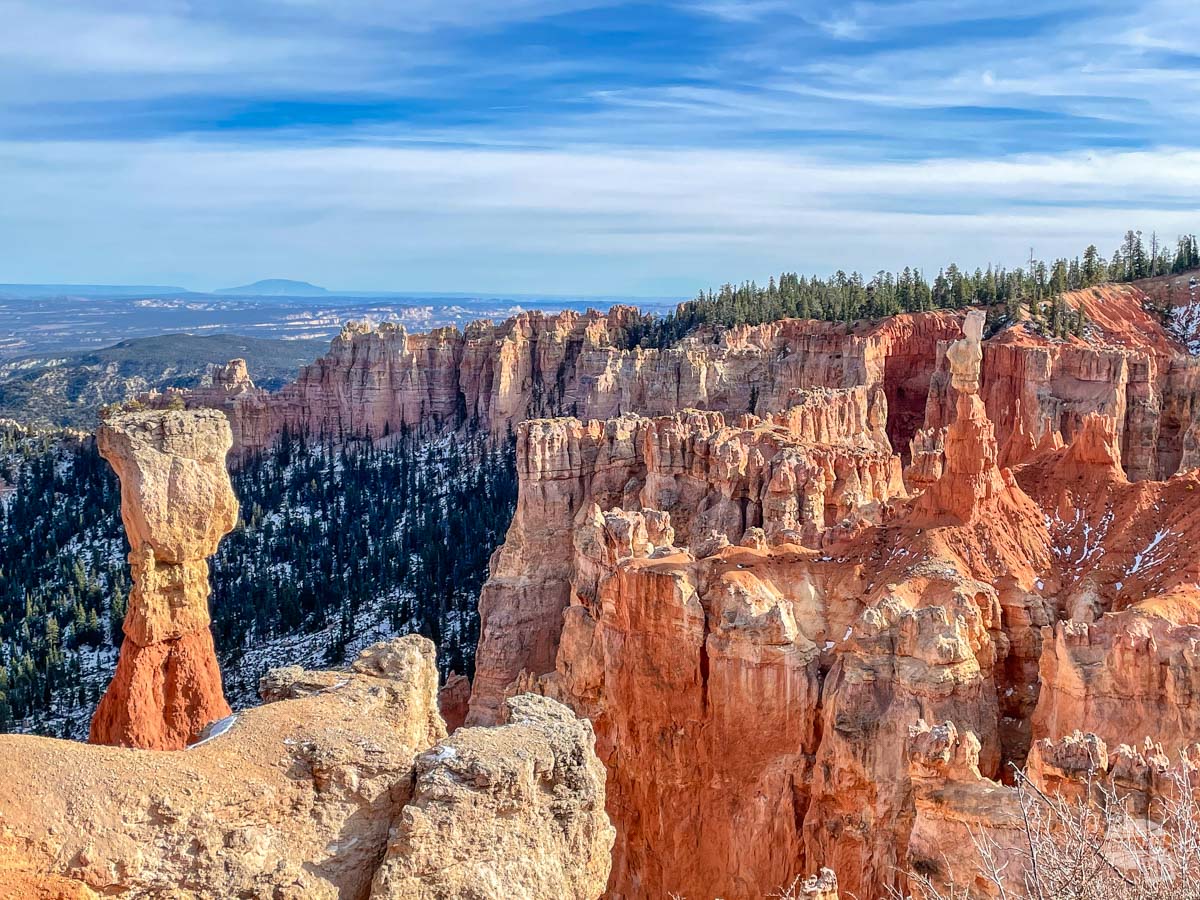
Another reason to visit these Utah National Parks in the winter is lower visitation. Utah’s Mighty Five are some of the most popular units of the National Park Service, including Zion at #4 of 62 National Parks, Bryce Canyon at #13, Arches at #15, Capitol Reef at #22 and Canyonlands at #26.
You will find much smaller crowds in the winter. Indeed, most of the year, Zion National Park requires visitors to ride a shuttle bus into Zion Canyon. In the winter, they are able to suspend the shuttle bus and allow visitors to drive into the canyon, though parking can fill up quickly.

With few exceptions, we were able to find ample parking throughout these parks. Once we got on the trails, we found it easy to get away from any crowds we did encounter.
You will also find the opportunity to see snow-covered red sandstone cliffs at each of these parks. Indeed, between our two visits to southern Utah in the winter, we found snow in all five of these parks.
Tips for Planning Your Visit to Utah’s National Parks in the Winter
Tip #1: Be Flexible and Plan for Weather Delays
The single biggest piece of advice I can give you in terms of planning a visit to Utah’s Mighty Five in the winter is to be flexible. Indeed, I would not make reservations too far in advance unless I was visiting during a holiday weekend.
Planning a trip to Utah’s National Parks in the winter can be a bit hit or miss depending on the weather. A snowstorm can easily shut down roads in the park or between the parks for a day or longer while crews work to plow the roads.
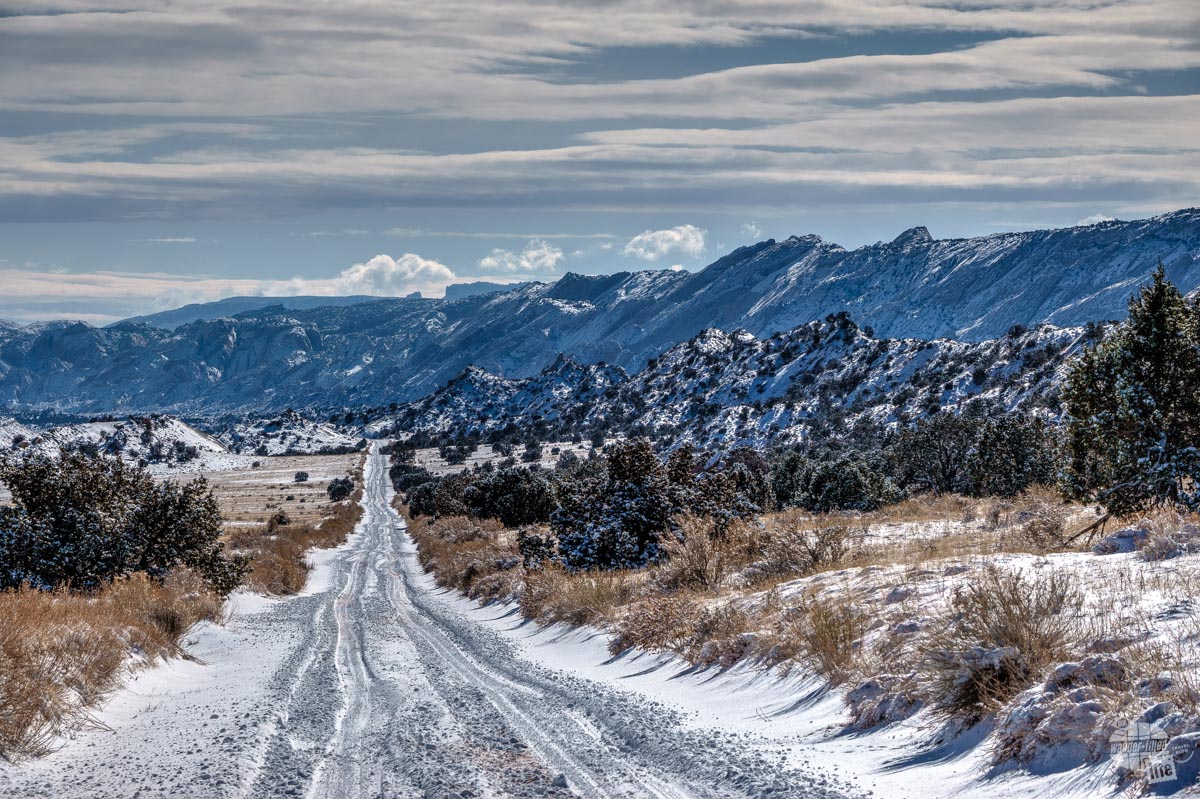
During our trip to Capitol Reef NP, we found the Scenic Drive closed down for the better part of two days while we were there. We got lucky the Park Service cleared the road by the end of the day on our second day there. Even so, we really want to come back to spend more time driving the roads here.
Tip #2: Embrace the Cold
Even on our relatively mild, weather-wise, visit to Zion National Park, we still encountered cold temperatures, especially in the mornings and late afternoons. One of the major drawbacks about hiking in canyons is the lack of sunlight and that makes for cooler temperatures than the weather apps will indicate.
So, to really enjoy the cold, we make sure we have good cold-weather gear with us. First and foremost, no cotton. When cotton gets wet, it stays wet and sucks away heat. While jeans are great for casual walks out to an overlook, they are not good for hiking in the snow. Seriously, cotton will kill you if you get into a bad spot on the trail. We wear either synthetic or wool clothing for our hikes.

Second, dress in layers. That means a good base layer that keeps you warm and wicks moisture away from your skin. Think high-tech long johns. Then add a solid mid-layer, like a good fleece. A good mid-layer should be a bit puffy to allow your body to heat air trapped in the fabric. Then you need a shell layer at the very least to stop the wind and snow.
I also highly recommend waterproof hiking shoes for hiking in the winter. My shoes had lost their waterproofing and when I stepped through some ice in Zion National Park, my feet got wet. What saved me was my wool socks. My socks wicked the water away from my feet and kept me warm even when wet. I would have had to turn around if I was wearing cotton.
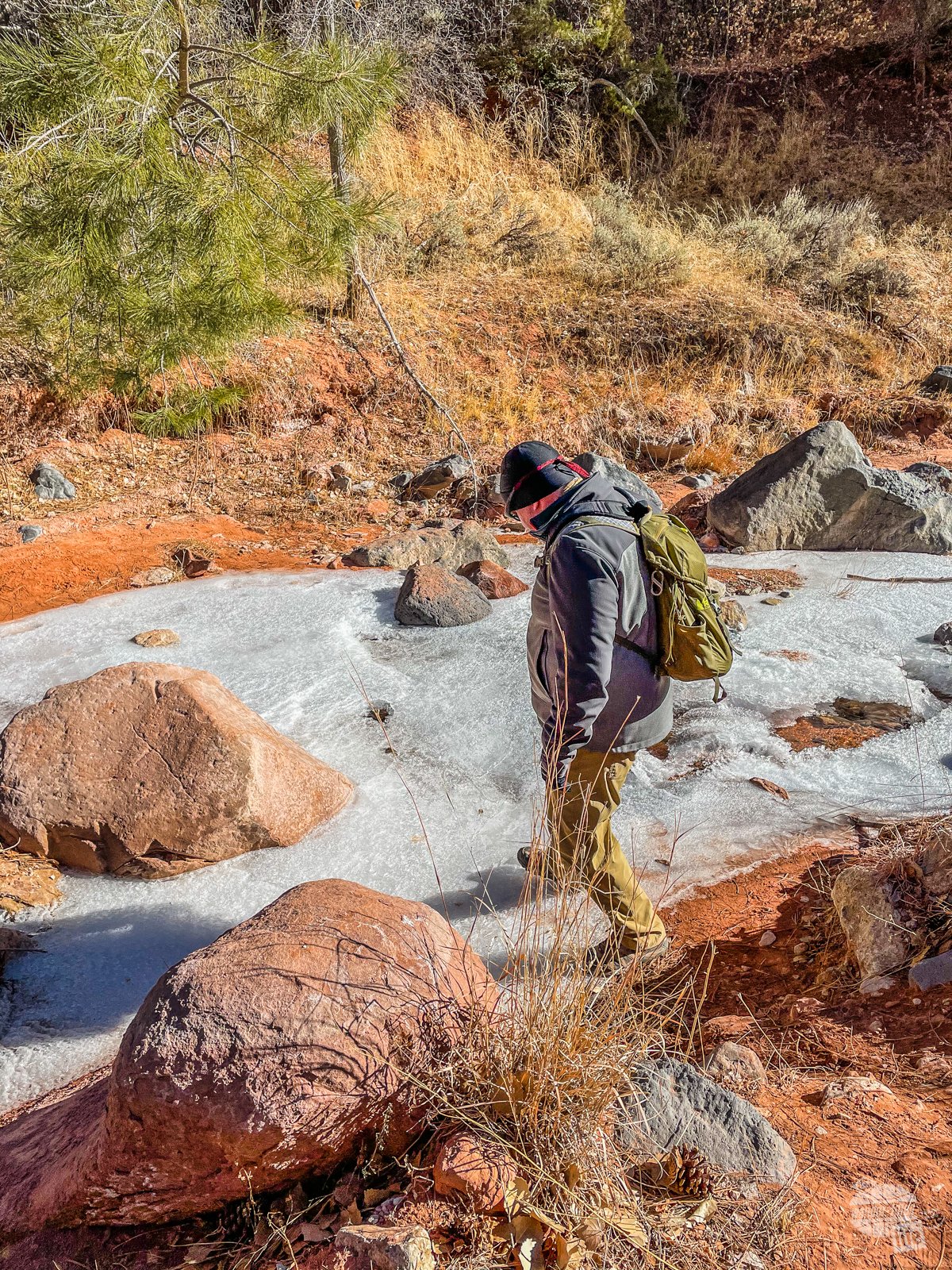
Add in some good gloves, a hat and some sort of neck gaiter or scarf, and you are good to go!
Read our gear recommendations for hiking in the winter here.
Tip #3: Be Prepared for the Worst
When you are driving in southern Utah in the winter, you will find long stretches of highway where you won’t see another soul. So be prepared for the worst when you travel in remote places like this.
We drive a four-wheel drive truck to make sure we can handle crossing over snow-covered passes or exploring snow-covered backroads. I know a lot of folks don’t feel the need for a four-wheel drive vehicle, so at the very least you should have chains or cables for your vehicle. We have had cables since we did our second winter road trip out West but have yet to use them. Four-wheel drive and good all-terrain tires has been enough for us. Still, better to have it and not need it than need it and not have it.

We always travel with food and water in the truck, as well as a couple of space blankets. These lightweight, easy-to-pack foil blankets will reflect a ton of heat and are a cheap and easy piece of emergency gear.
One thing you can expect as you drive between the parks in southern Utah is a lack of cell phone signal. A good piece of emergency gear we take with us when we travel in remote places is a cell phone booster. While it won’t magically turn a complete lack of signal into something you can use, it will take a very weak signal and turn it into something you can use to call for help.
Read more about preparing for a winter road trip here.
Tip #4: Expect Not All Services Will Be Open
One of the double-edged swords of traveling this time of year is smaller crowds means less stuff is open. You will find some hotels and restaurants near the parks are closed, making for fewer options.

We found the gateway communities of Bryce Canyon City and Torrey (Capitol Reef), in particular, had significant closures during the winter. This can make getting a good meal a bit difficult in the winter. Still, we found enough open options to enjoy while we were there.
A 20-Day Itinerary for Visiting Utah’s Mighty Five
Here’s a sample itinerary for visiting Utah’s National Parks in the Winter, starting in Zion National Park and working your way east. Please note, this is not to say you have to spend this much time at each of these parks. This is the itinerary we would use to feel like we had plenty of time to see each park, do tons of stuff we are interested in and not feel rushed. To make it easier to shorten the trip if needed, I have included the minimum number of days for each park as well.
Zion National Park (at least two full days)
Read more about our visit to Zion National Park here.
Day 1: See Zion Canyon and do some hiking in the Canyon
Day 2: Drive Kolob Canyon Road and do some hiking
Day 3: Drive Kolob Terrace Road and do some hiking
Day 4: Drive the Zion-Mt. Carmel Road and do some hiking
Travel Day: Drive from Zion National Park to Bryce Canyon National Park
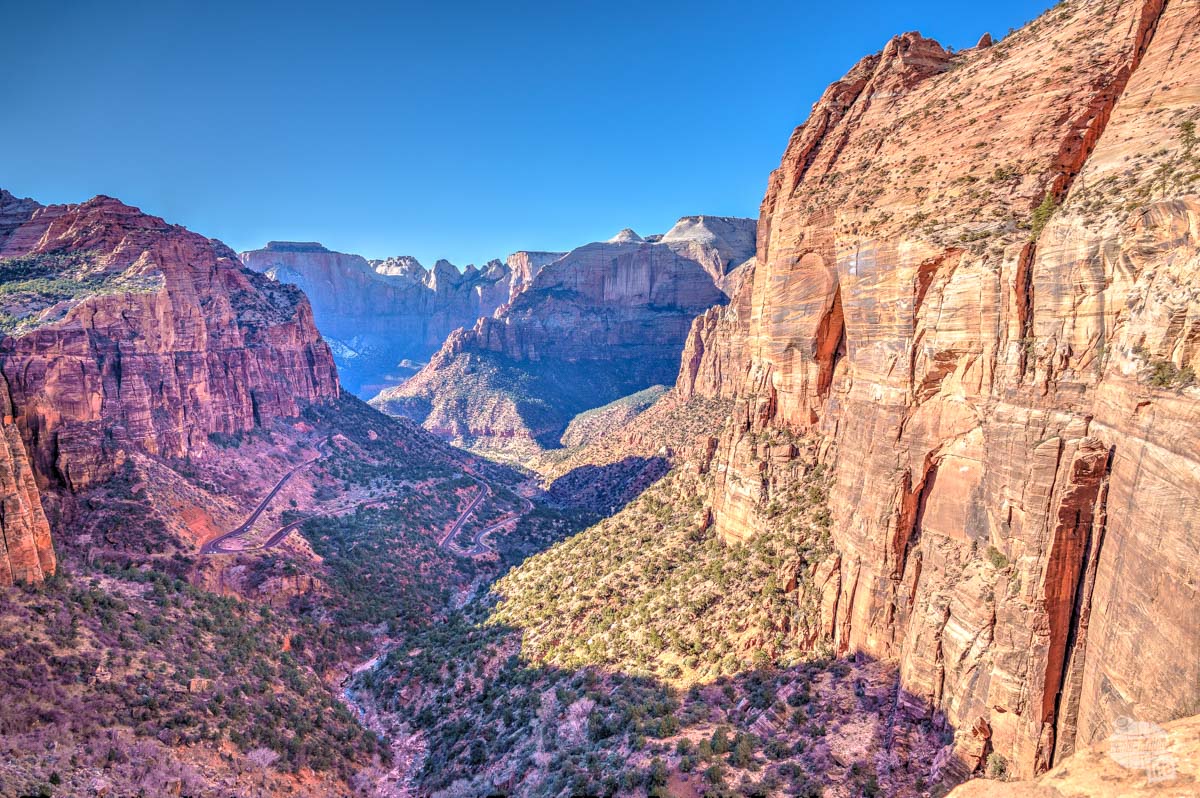
Bryce Canyon National Park (at least one full day)
Read more about our visit to Bryce Canyon National Park here.
Day 6: Spend the Day driving the Main Park Road and stopping at the turnouts, doing some light hiking. Drive out to Mossy Cave Trail.
Day 7: Spend the day hiking below the rim of Bryce Canyon
Travel Day: Drive Utah 12 from Bryce Canyon National Park to Capitol Reef National Park. Stop at several of the state parks along the way. Be sure to check on road conditions in the winter! This wasn’t open when we visited.

Capitol Reef National Park (at least one full day)
Read more about our visit to Capitol Reef National Park here.
Day 9: Explore Fruita and drive the Scenic Drive.
Day 10: Do some extended hiking in the Fruita area
Day 11: Drive one of the unimproved road loops if they are dry, depending on your vehicle
Travel Day: Drive to Moab, where both Arches and Canyonlands national parks are located
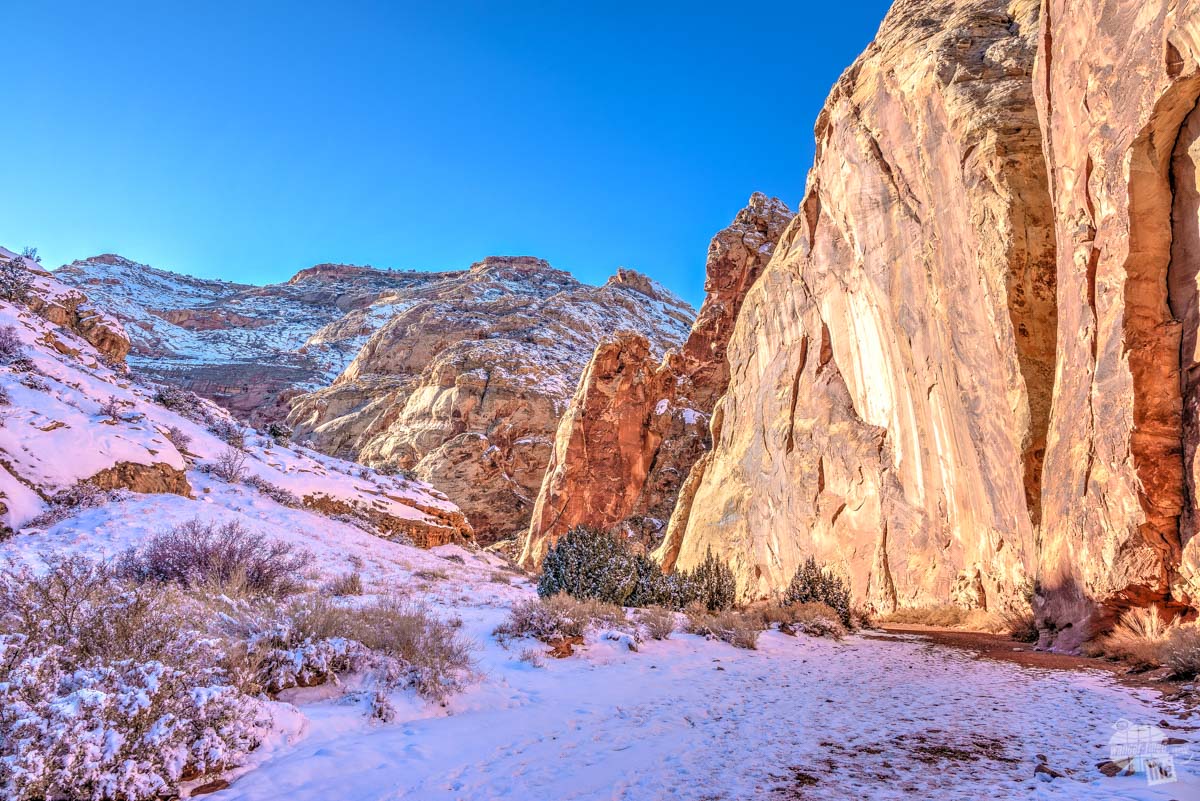
Arches National Park (at least one full day)
Day 13: Drive the roads of Arches National Park and do some short hikes
Day 14: Drive the roads of Arches National Park and get in some longer day hikes
Day 15: Drive some of the unpaved roads and explore the backcountry of Arches National Park, depending on the capabilities of your vehicle and road conditions
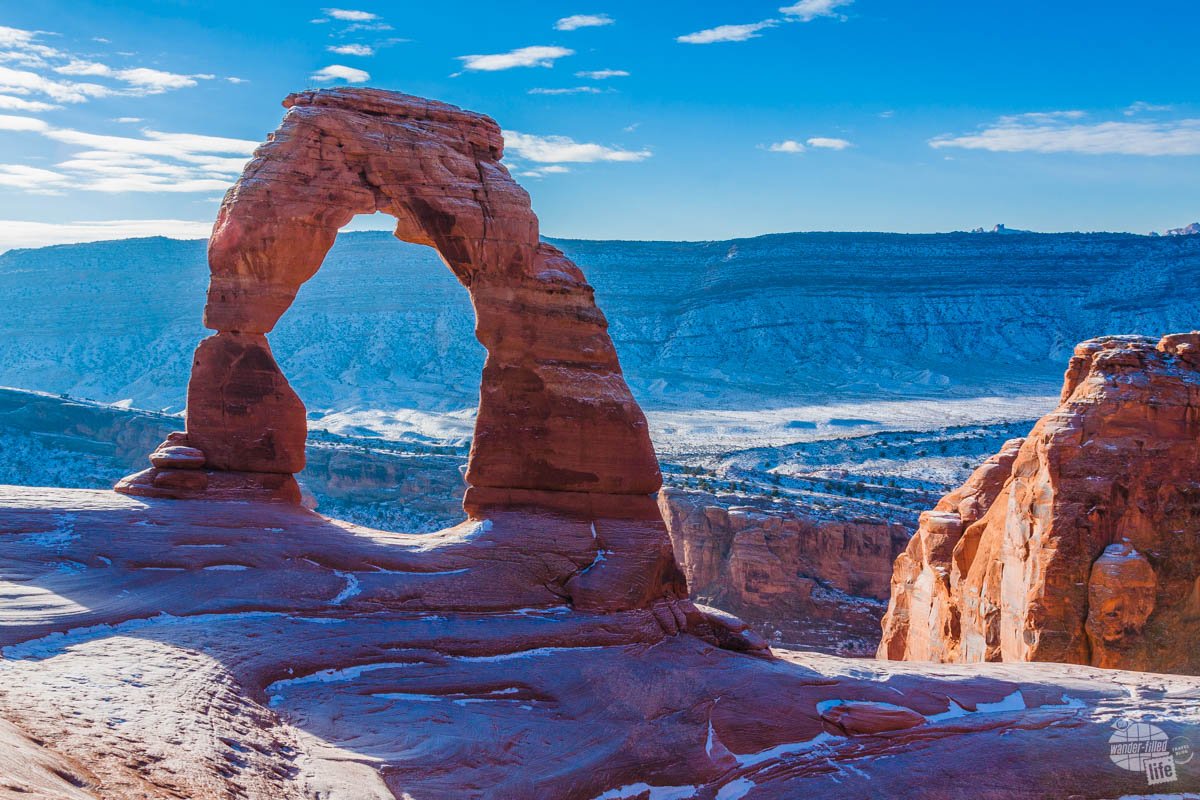
Canyonlands National Park (at least two full days)
Read more about our visit to Arches and Canyonlands national parks here.
Day 16: Drive the Island in the Sky section of Canyonlands National Park and get in some hiking
Day 17: Drive the Needles section of Canyonlands National Park and get in some hiking
Days 18, 19 and 20: Flexible days to allow for snow closures or more activities in one or more of the parks.
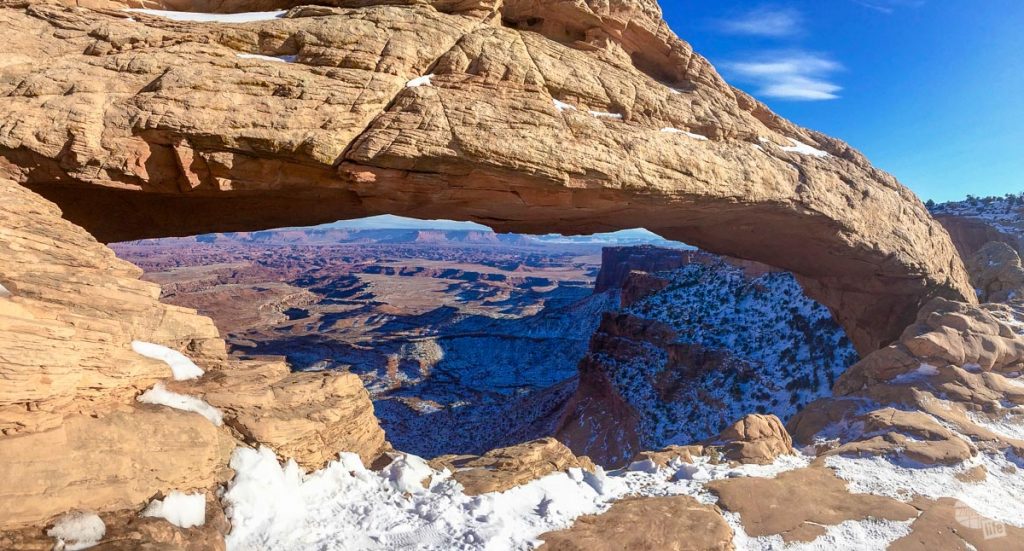
What You’ll Miss in the Winter
You will often find reduced hours at visitor centers and some of the more remote visitor centers will be closed in the winter. That said, all of these parks are open year-round and accessible to visitors.
As mentioned above, driving any of the unimproved or dirt roads in the winter can be problematic if there has been a lot of snow. Moisture makes a lot of these roads impassible, even for a well-geared four-wheel drive vehicle.
Zion National Park
In Zion National Park, the main thing you will miss from being in the park in the winter is the lack of vegetation. Zion Canyon, in particular, has lots of trees and the green leaves provide an amazing contrast with the red cliffs. Also, you will find lower flow at the Emerald Pools.
The shuttle busses often do not run in the winter, which can be both a good and bad thing. Having the ability to drive your own vehicle on the scenic drive is great. But, once parking lots fill up, rangers will close the scenic drive and your only options are to walk or bike. When we visited, the drive closed before 9:00 am.
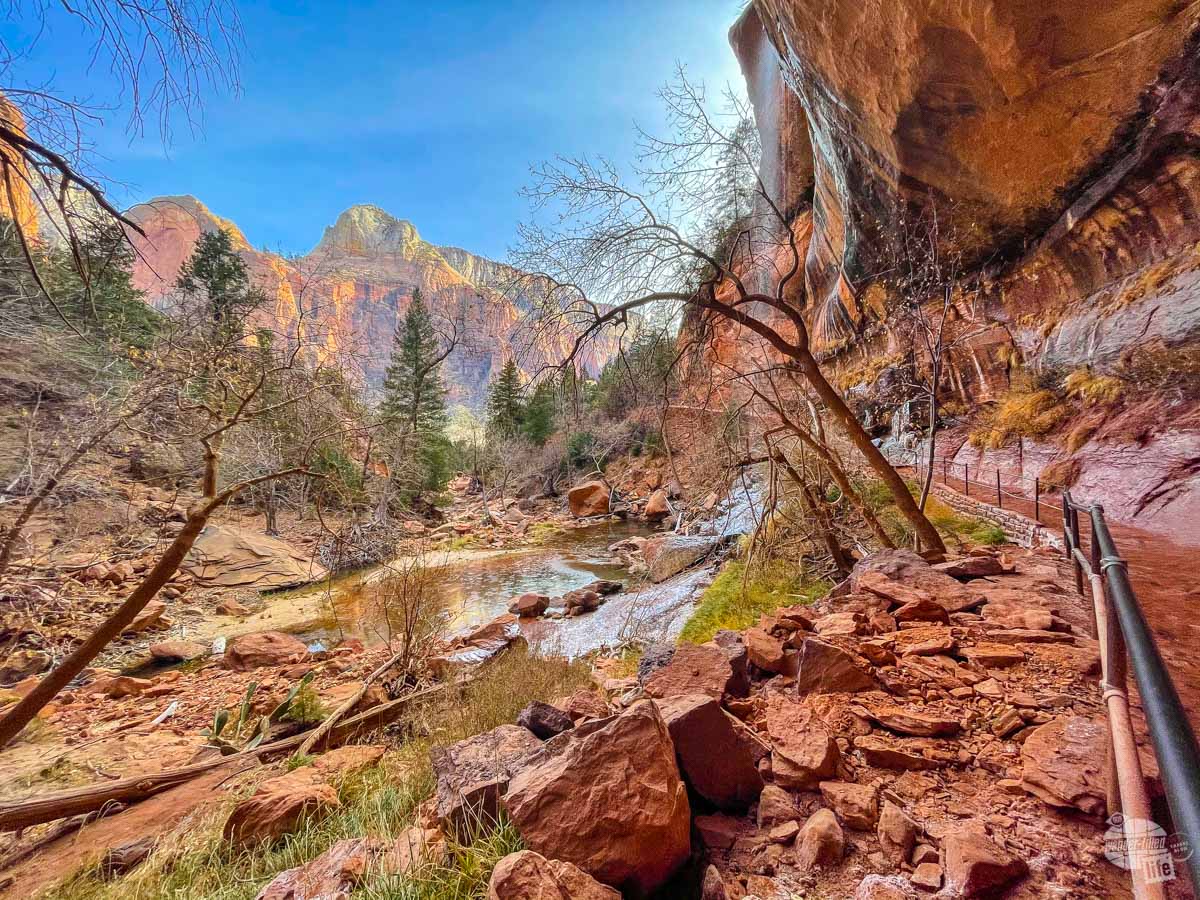
Perhaps the biggest downside to visiting Zion in the winter is that the park closes the Kolob Canyons area following winter weather. This area sits at a higher elevation, making it much more prone to closure than Zion Canyon.
Finally, if you’re looking to hike Angels Landing or The Narrows, just be prepared for the cold. While both trails are open in the winter, the hiking conditions are better in warmer weather.
Bryce Canyon National Park
Honestly, other than a couple of short drives being closed, there’s not a lot you can’t do in Bryce Canyon National Park. You will find Fairyland Point and Paria View closed in the winter. You will also find no shuttle bus service in the winter.
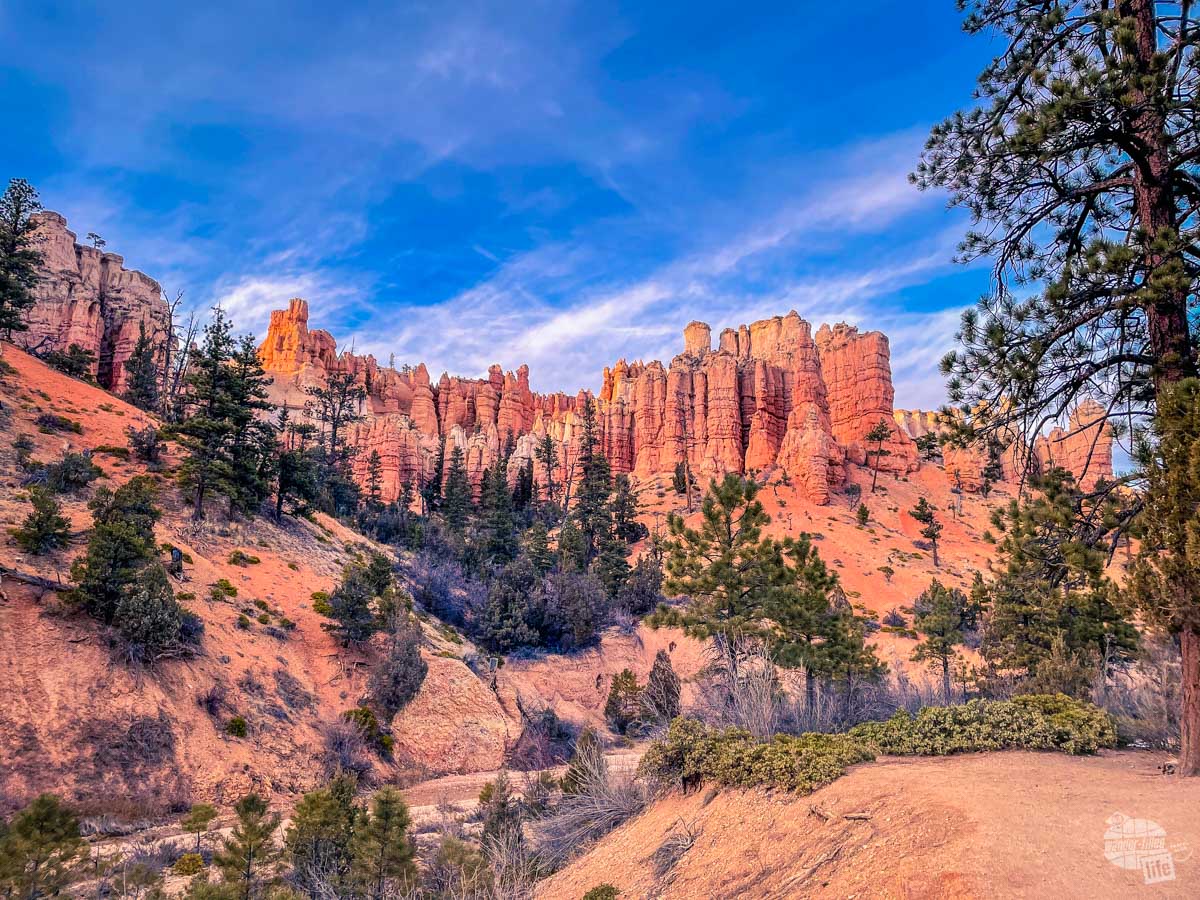
The park does close the main drive once snow starts falling but, generally, gets it reopened as quickly as possible. Still, if you’re on a tight schedule you could miss a good portion of the scenic drive.
Capitol Reef National Park
The single biggest drawback to visiting Capitol Reef NP in the winter is the Gifford House in Fruita is closed. This museum and gift shop provides a closer look at Mormon settlers in the area. It also sells homemade pies made from the fruit of the orchards in the park. You also lose out on seeing the fruit trees in the Fruita area and the contrast of green trees with red sandstone cliffs.

Interestingly, Capitol Reef does not generally get a lot of snow. That means it can take a while for roads to reopen when it does get significant winter weather, as we found out.
Arches and Canyonlands National Parks
Canyonlands National Park typically closes the Needles Visitor Center in the winter but the district remains open. The Island in the Sky Visitor Center is generally closed Tuesdays and Wednesdays from January to early March.
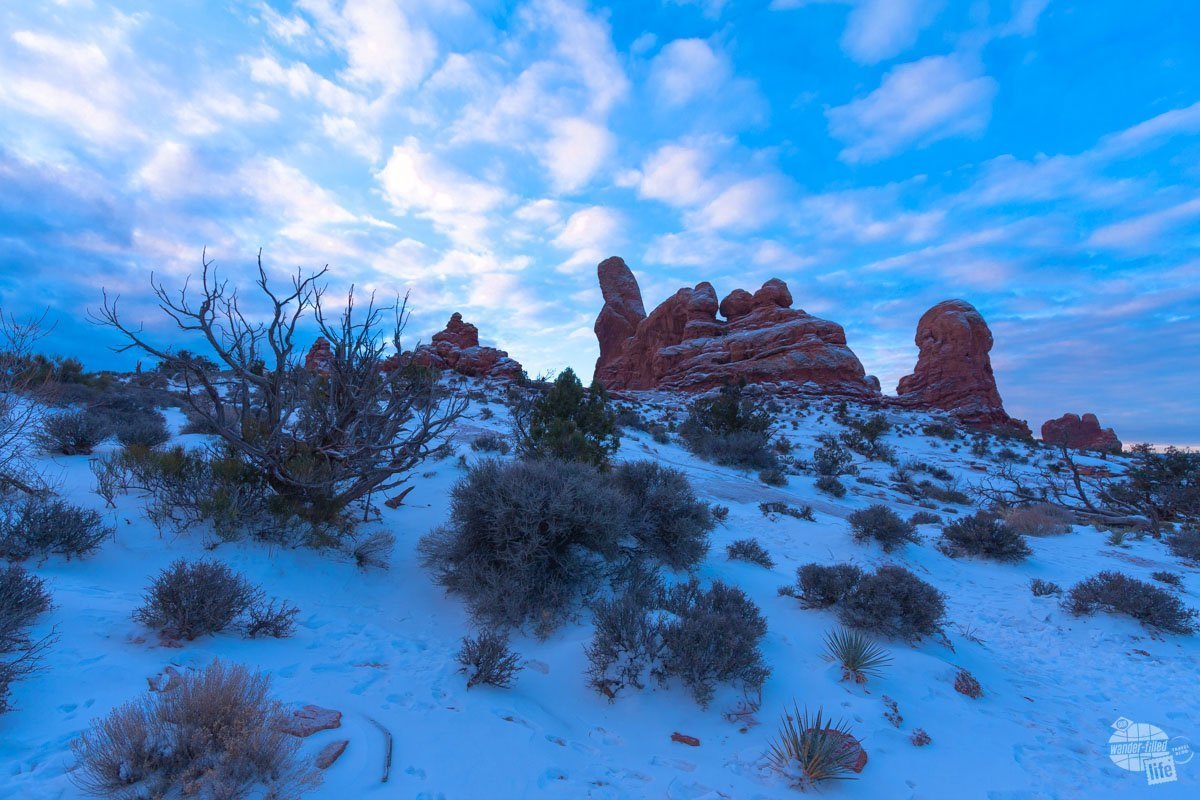
Otherwise, there are no regular closures in the winter for these two parks. Still, even a small amount of snow can temporarily close roads or limit services. Check each park’s web site and social media pages for current conditions.
Final Thoughts on Visiting Utah National Parks in the Winter
While it does require a bit of planning and some flexibility, we have really enjoyed visiting the Utah National Parks in the winter. We enjoyed seeing the desert coated in snow. Being able to drive into Zion Canyon rather than ride the shuttle bus is nice, at least until parking fills up. Most importantly, we really enjoyed the solitude we found on the trail in one of the most-visited national parks in the country.
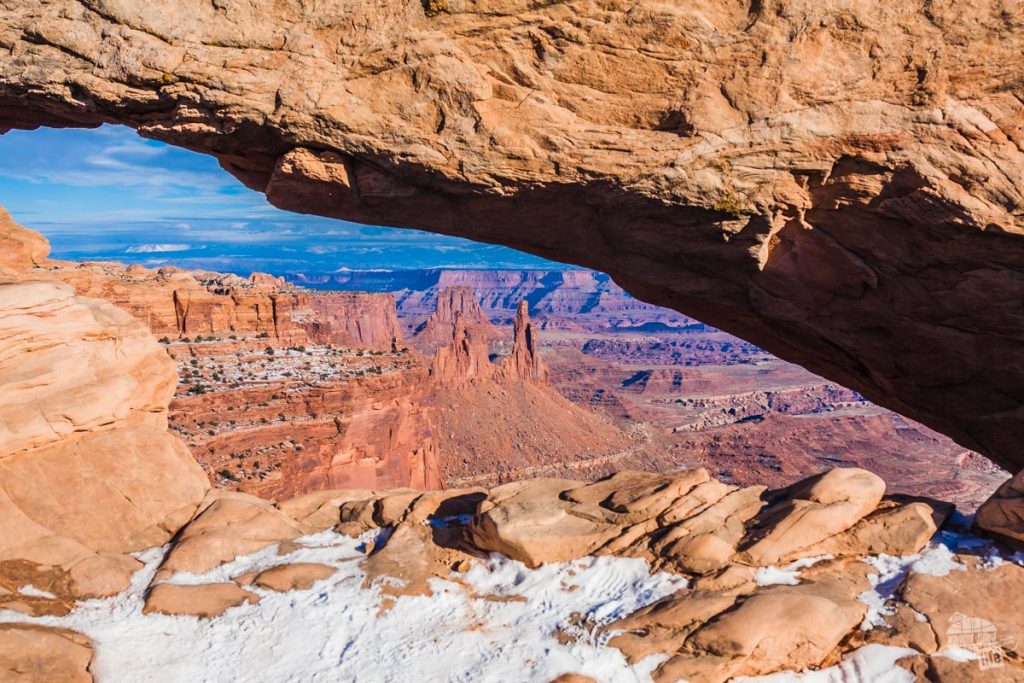
Yes, coming here in the winter requires you to embrace the cold weather. There is simply no getting around that it will be cold. You will likely encounter snow on your trip. If you want to get out and hike, that means hiking in the snow.
The reward is breathtaking views, smaller crowds and no oppressive heat on your hikes. We loved it.
Travel Resources
What do you use to find a flight?
We use Skyscanner to find deals on flights. Skyscanner has a great interface and compares tons of airlines for the best pricing and routing. That said, it does not always have every airline and some airlines will have better deals on their website. Still, Skyscanner is a great place to start.
Click here to search for a flight.
What do you use to find a hotel?
We typically stay at Hilton properties, so we use the Hilton website. You can find good Hilton Honors discounts or AAA discounts for a hotel there. We make great use of our free night certificates from our Hilton Honors American Express.
Click here to book a Hilton property.
If there are no Hilton properties available, we use TripAdvisor to read reviews and book the hotel. We find we can get the best price that way.
Click here to search for a hotel.
We recently partnered with Stay22 to add interactive maps to each of our destination posts. This will allow you to see a plethora of hotels and vacation rentals all in one responsive map of the area.
What if I need more space than I can get at a hotel?
We use Vrbo for the times when we have rented a cabin for a weekend getaway, like this cabin in Townsend, TN, or needed to rent a house for a large family vacation. We had a great experience with them in terms of refunding deposits when COVID hit and will continue to use them.
Click here to search for a vacation rental.
Who do you use for rental cars?
As a general rule, we book with Hertz for rental cars. We have had nothing but good experiences with them. Plus, we really like unlimited mileage and not worrying about crossing state lines. We have even rented from Hertz overseas in both Slovenia and Croatia.
Click here to book a rental car.
How about booking a cruise?
We have found some amazing prices for booking a cruise through Cruise Direct. We have saved a lot of money on our cruises compared to what we found elsewhere, making a last-minute Bahamas cruise even cheaper.
Click here to book a cruise.
What if I want to rent an RV?
We highly recommend Outdoorsy for RV rentals. We rented a camper van for a week to visit Rocky Mountain National Park for the elk rut and Custer State Park for the Buffalo Round-Up and had a blast. The program was easy to use and we really enjoyed the freedom of having a camper van for that trip.
Click here to rent an RV.
What do you use for booking tours?
We don’t often book tours. Typically, we like to do stuff on our own. That said, there are some experiences you can’t have any other way. So, when we do want to book a tour, we always check Viator first.
Click here to book a tour.
Do you use anything to get discounts on the road?
We make extensive use of both Good Sam and AAA on the road. Good Sam is normally regarded as a discount card for RVers at campgrounds and Camping World but anyone can use the 5 cents off a gallon at the pump at both Pilot and Flying J.
Click here to get a Good Sam membership.
We have had AAA as long as we have been married and it has more than paid for itself in discounts at hotels, aside from the peace of mind of having roadside assistance. Add in paper maps and the ability to get an international driver’s license and it is more than worth it for any traveler out there.
Click here to get a AAA membership.
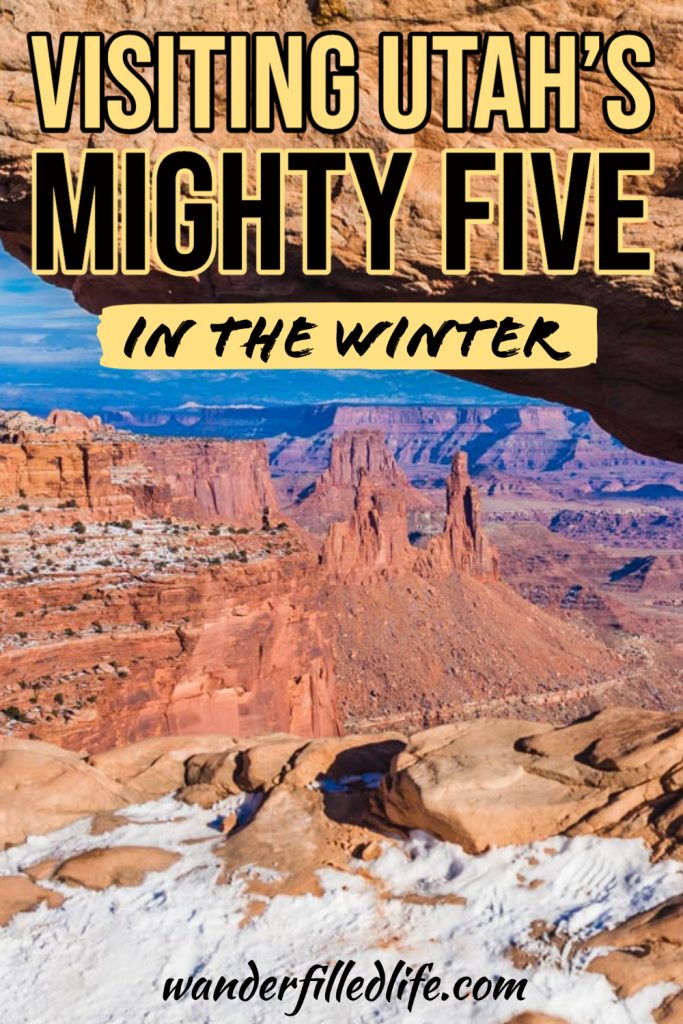



Do you have any special tips or thoughts on traveling this itinerary with a baby (20 months)? My husband is a teacher too so we will be going over the winter break from December 20-31.
Hi Natalie,
Since we don’t have kids, I am probably not the perfect person to ask, but here are my thoughts:
1) Make sure you have EVERYTHING you need, baby-wise, when you go to Bryce Canyon and, especially, Capitol Reef. There is not a lot in the way of services at those parks… nor grocery stores.
2) Be very wary of the weather. We have a 4WD truck and travel with snow chains whenever we head to this part of the world in the winter. I would be very cautious about driving if the forecast calls for snow, especially with a baby.
3) If you have plenty of good winter gear, I see no reason why you can’t do some of the shorter hikes with the baby. Just make sure you watch for icy spots on the rocks.
That’s the best I have… I hope it helps.
Hi Grant, thanks for the very informative article! We plan to fly to Salt Lake City, get a rental car there and visit a few of these national parks. We are not hard core hikers and will bring our two young kids (7 & 10). Do you have advice / recommendation if we plan to spend a week or so there? (E.g. which parks should we visit if we prefer a relatively safer and more relaxed trip?)
Thanks a ton!
Hi Cora! Honestly, I highly suggest visiting all of these five parks! These parks can be enjoyed without doing a lot of hiking and what you can see without getting on the trail is truly stunning!
What weather can we expect early march?
March would likely be one of the best times to visit the Utah national parks! The weather is generally mild – probably cool mornings and nights with warm but not hot days. Areas of high elevation might be a little cooler and there may still be a possibility of snow, though (particularly at Bryce Canyon). You can generally find weather information on each park’s website in the Plan Your Visit / Basic Information section.